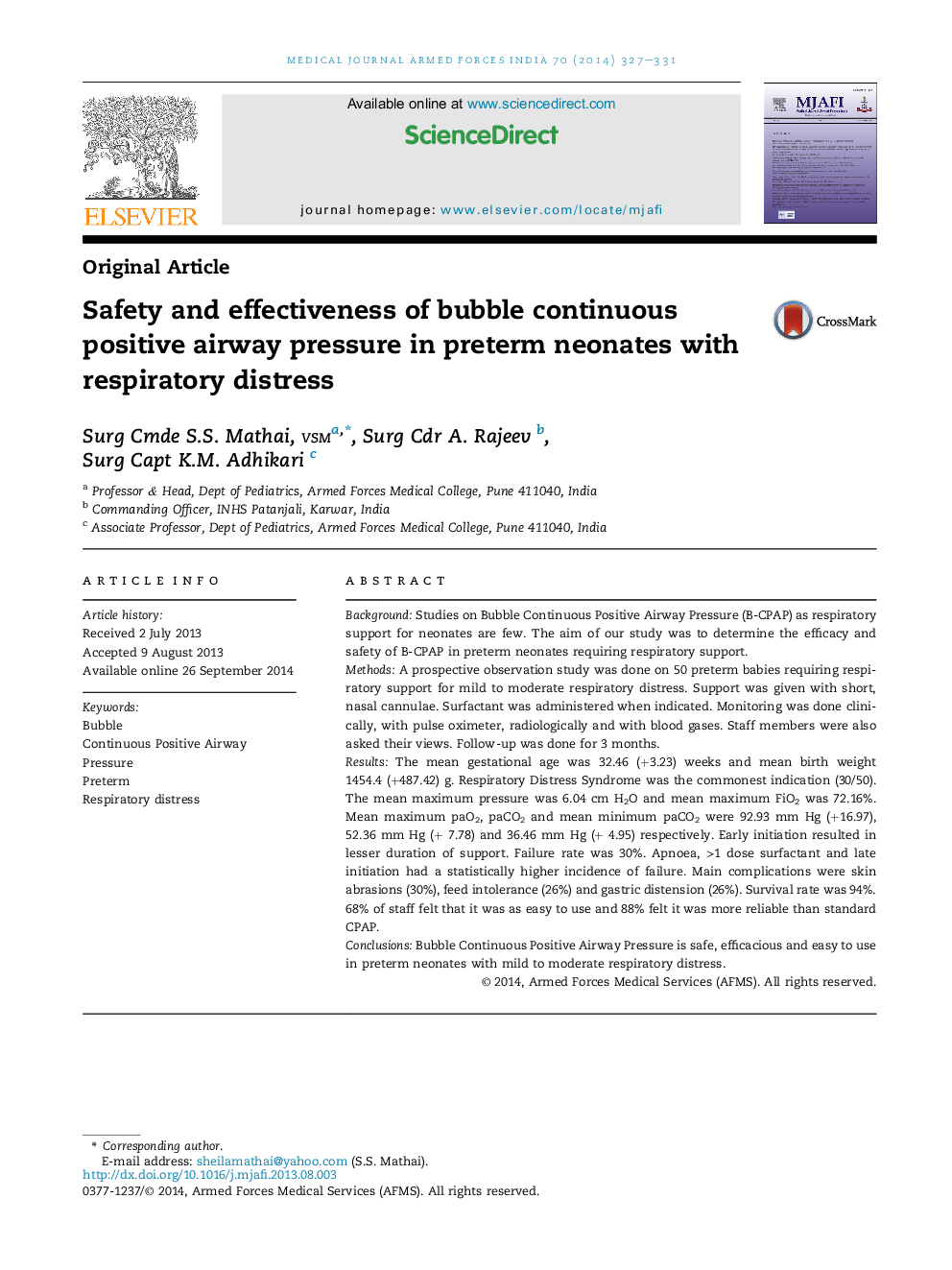| Article ID | Journal | Published Year | Pages | File Type |
|---|---|---|---|---|
| 3161243 | Medical Journal Armed Forces India | 2014 | 5 Pages |
BackgroundStudies on Bubble Continuous Positive Airway Pressure (B-CPAP) as respiratory support for neonates are few. The aim of our study was to determine the efficacy and safety of B-CPAP in preterm neonates requiring respiratory support.MethodsA prospective observation study was done on 50 preterm babies requiring respiratory support for mild to moderate respiratory distress. Support was given with short, nasal cannulae. Surfactant was administered when indicated. Monitoring was done clinically, with pulse oximeter, radiologically and with blood gases. Staff members were also asked their views. Follow-up was done for 3 months.ResultsThe mean gestational age was 32.46 (+3.23) weeks and mean birth weight 1454.4 (+487.42) g. Respiratory Distress Syndrome was the commonest indication (30/50). The mean maximum pressure was 6.04 cm H2O and mean maximum FiO2 was 72.16%. Mean maximum paO2, paCO2 and mean minimum paCO2 were 92.93 mm Hg (+16.97), 52.36 mm Hg (+ 7.78) and 36.46 mm Hg (+ 4.95) respectively. Early initiation resulted in lesser duration of support. Failure rate was 30%. Apnoea, >1 dose surfactant and late initiation had a statistically higher incidence of failure. Main complications were skin abrasions (30%), feed intolerance (26%) and gastric distension (26%). Survival rate was 94%. 68% of staff felt that it was as easy to use and 88% felt it was more reliable than standard CPAP.ConclusionsBubble Continuous Positive Airway Pressure is safe, efficacious and easy to use in preterm neonates with mild to moderate respiratory distress.
